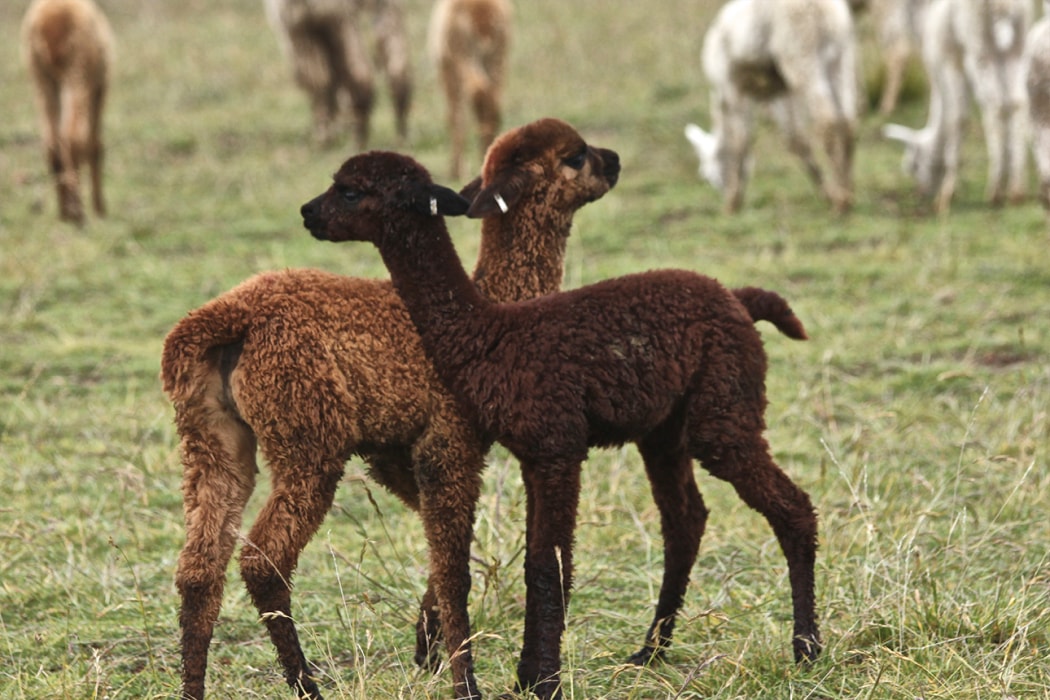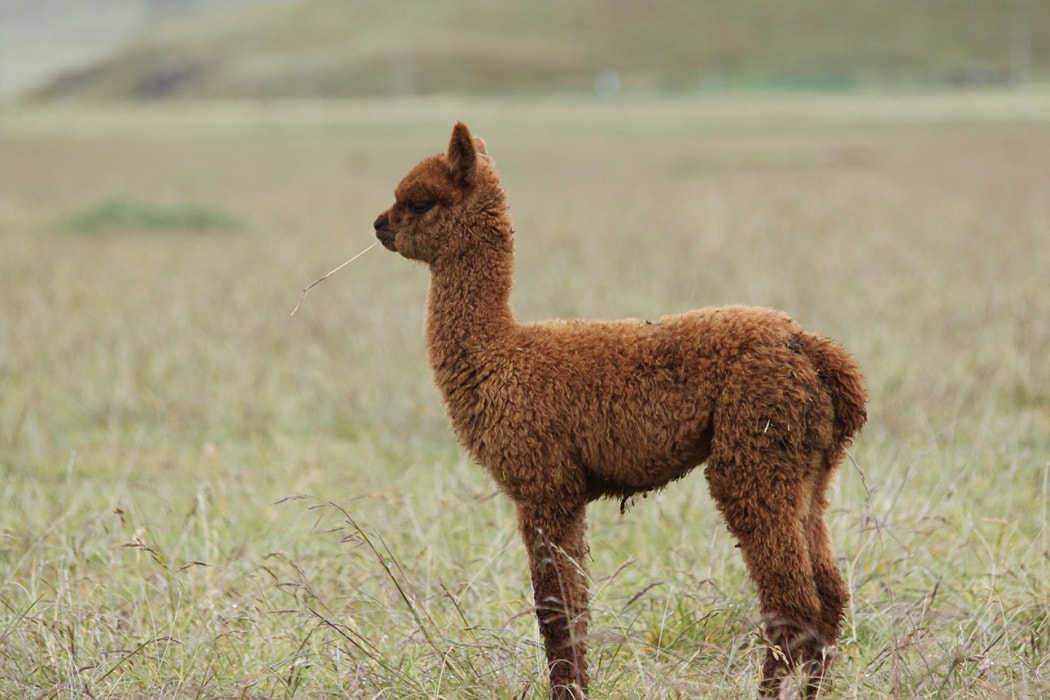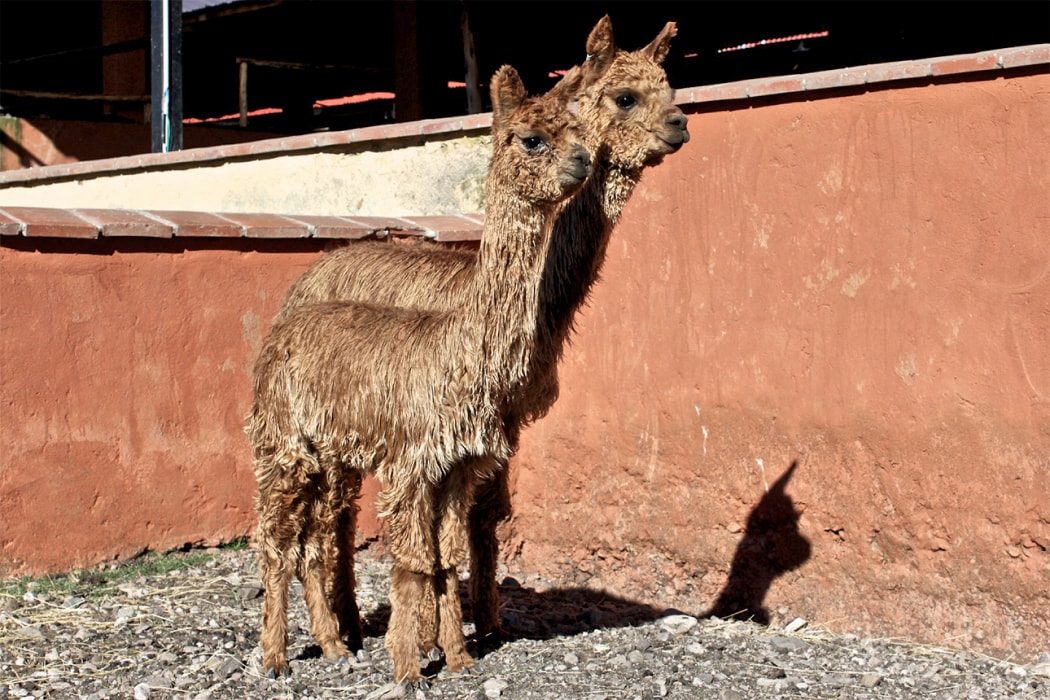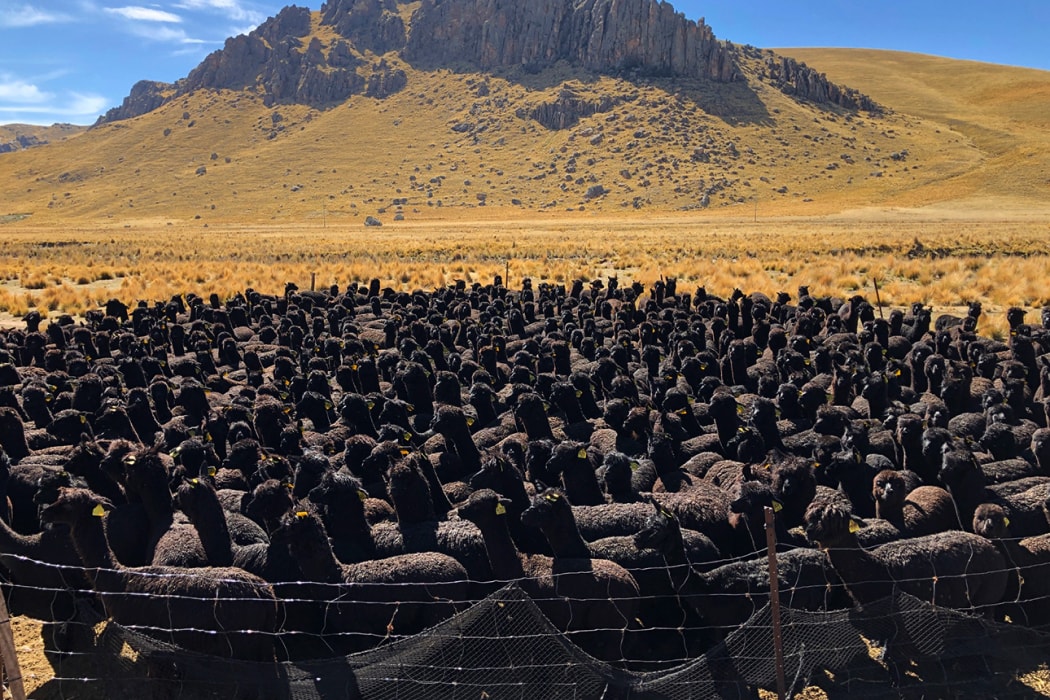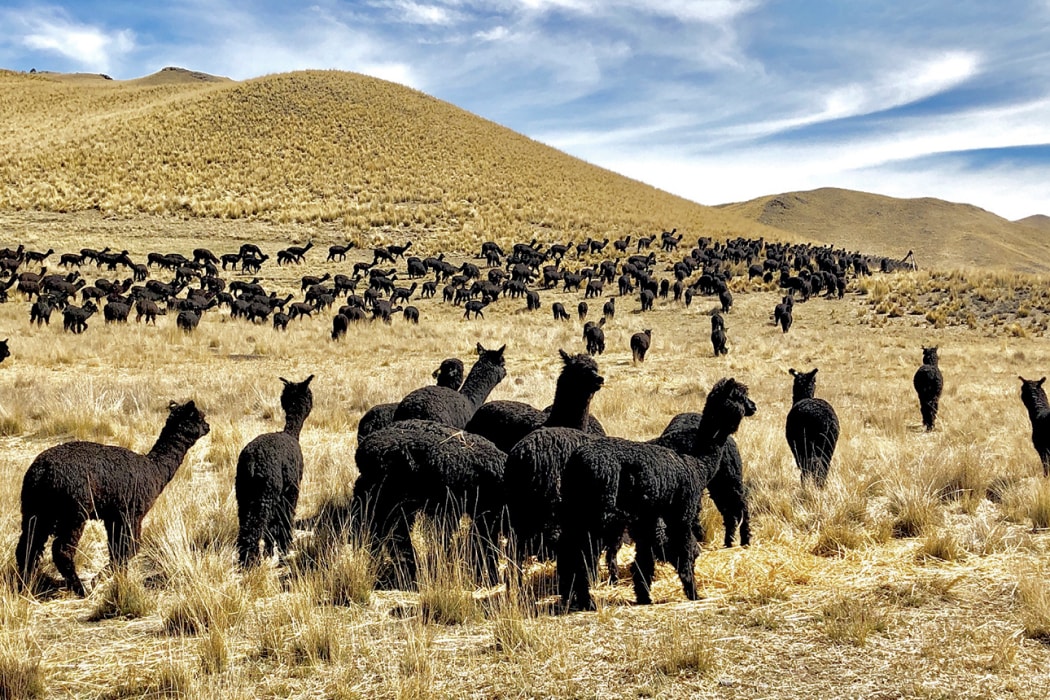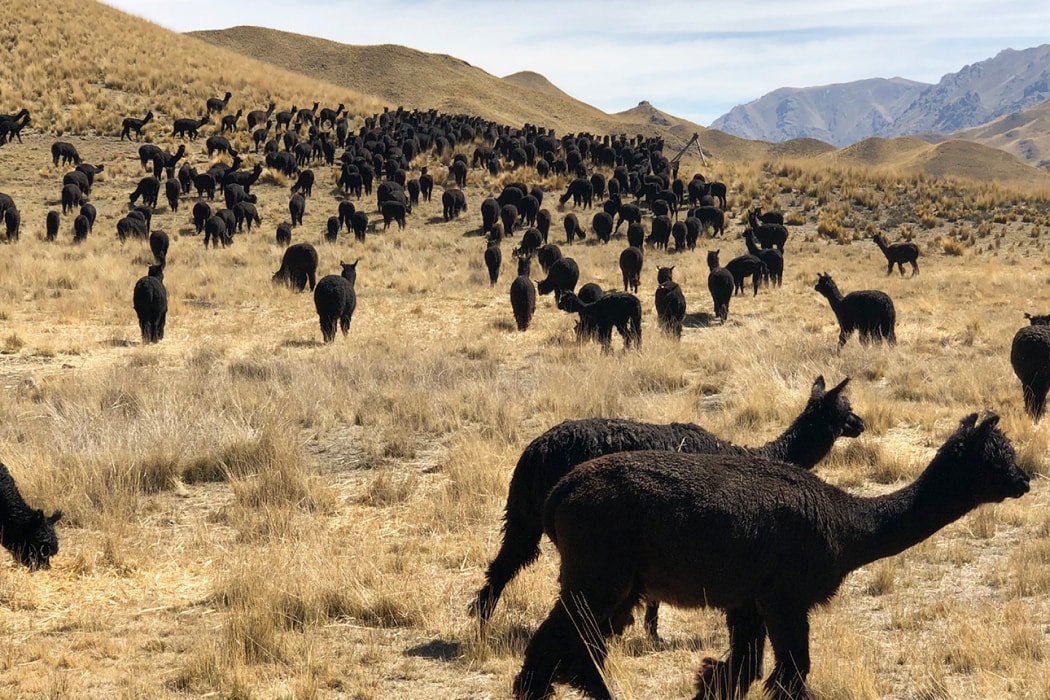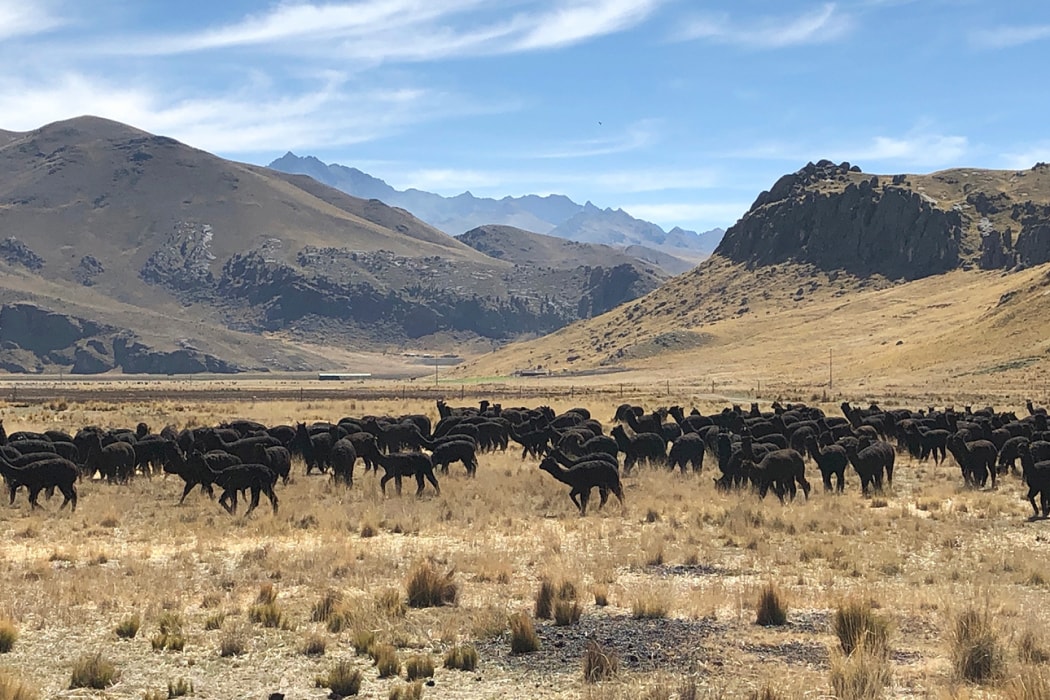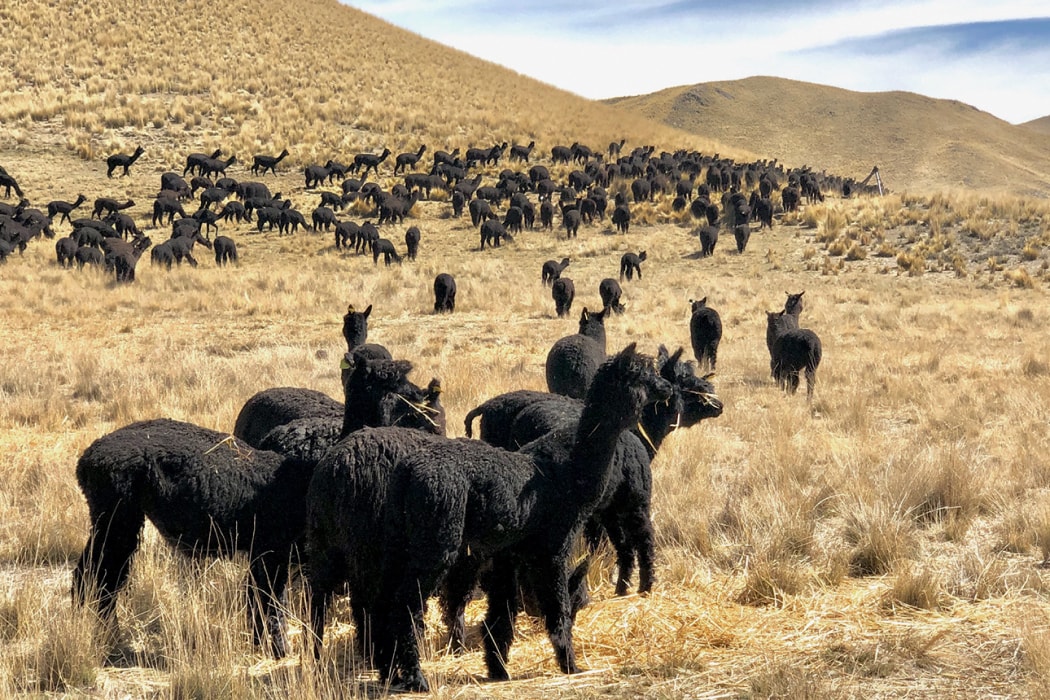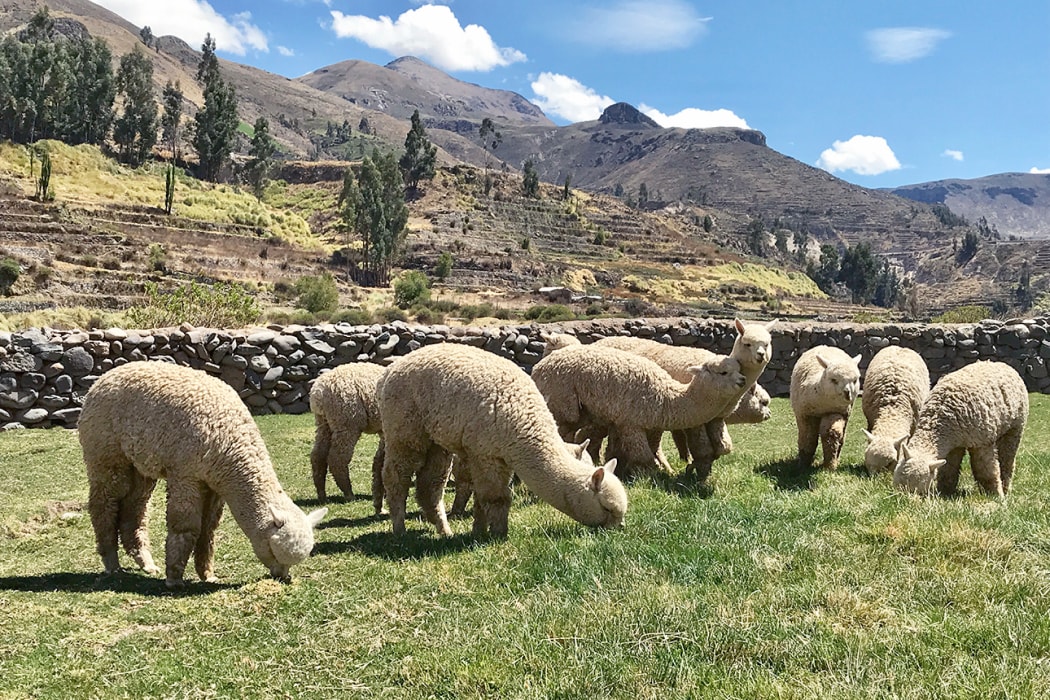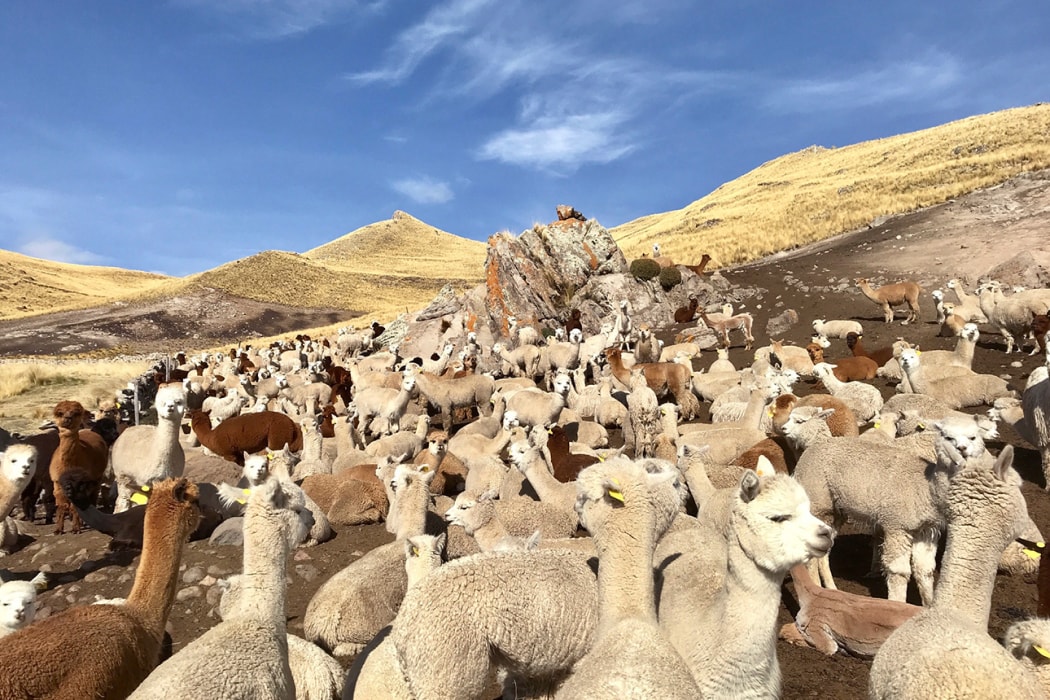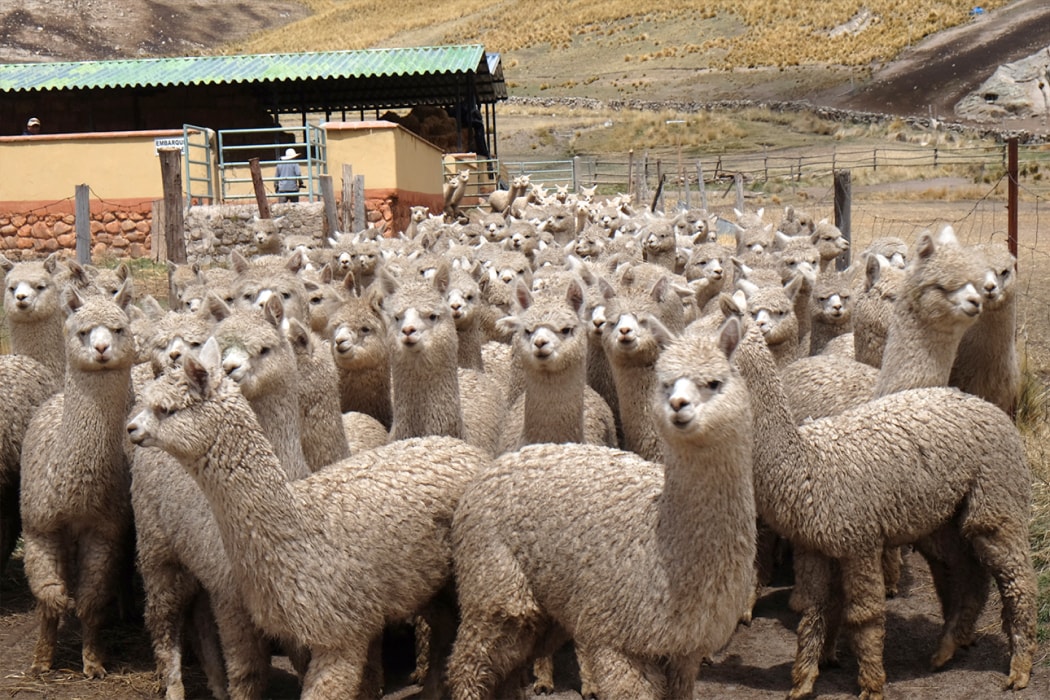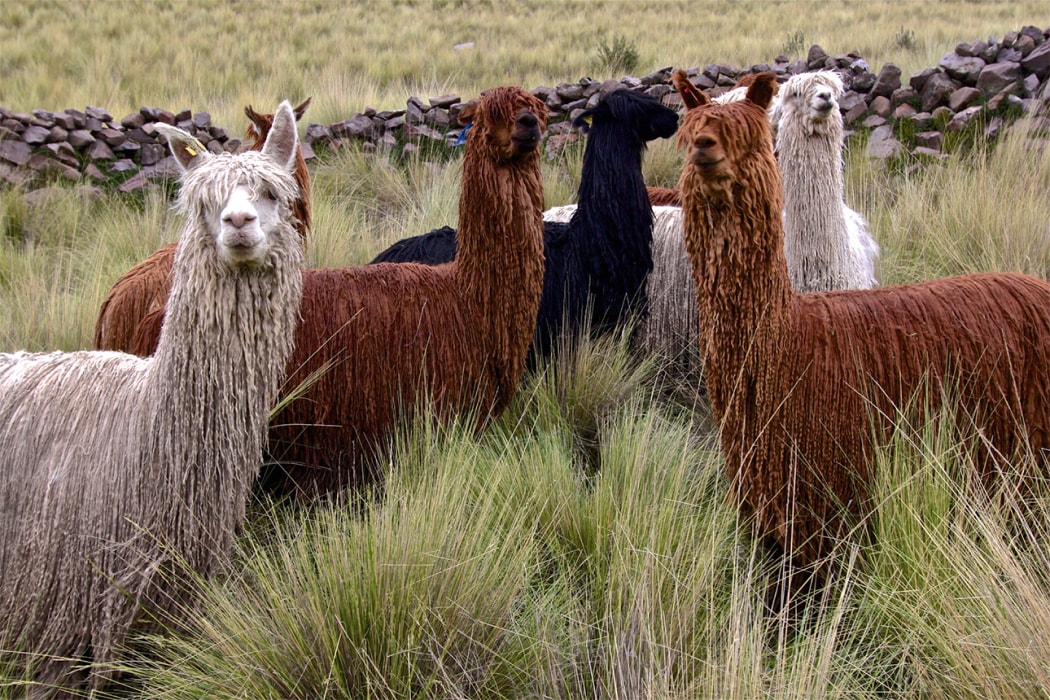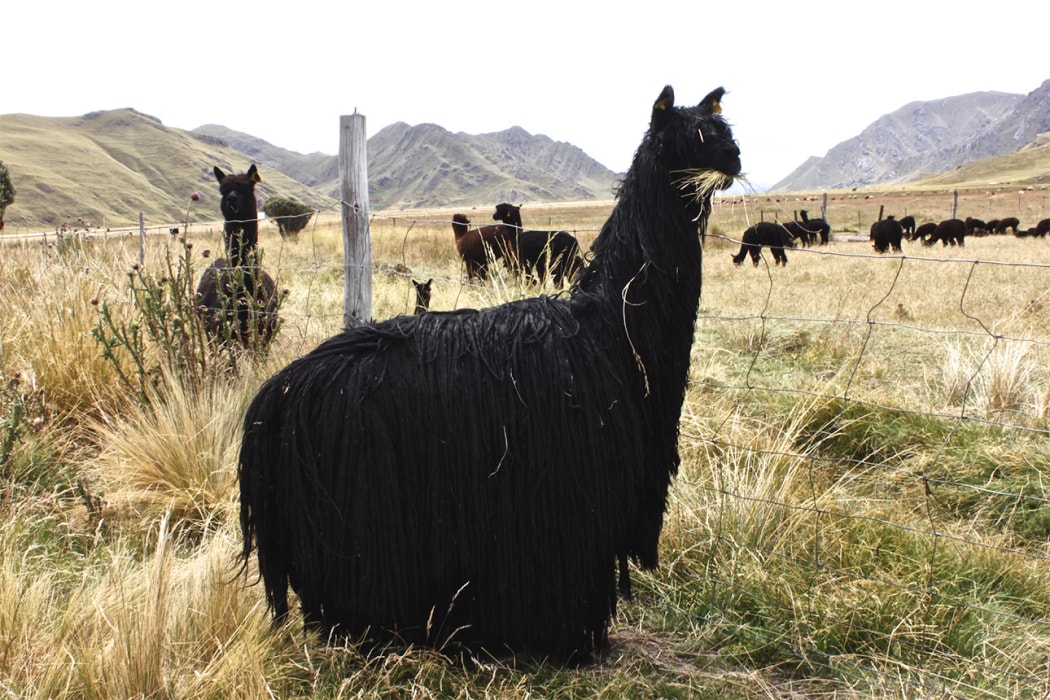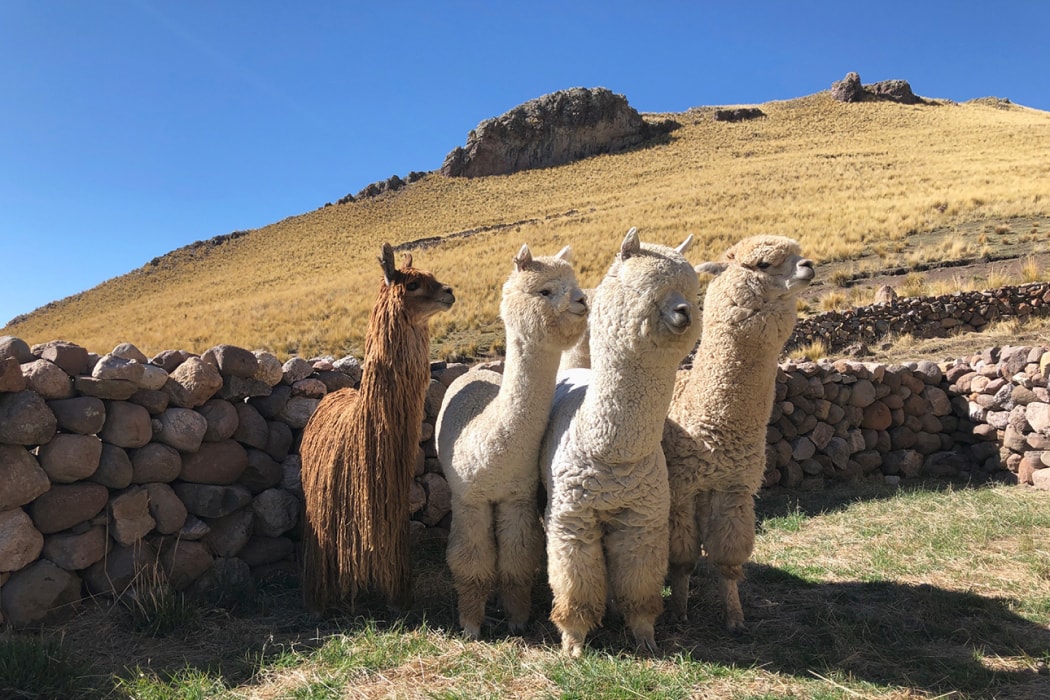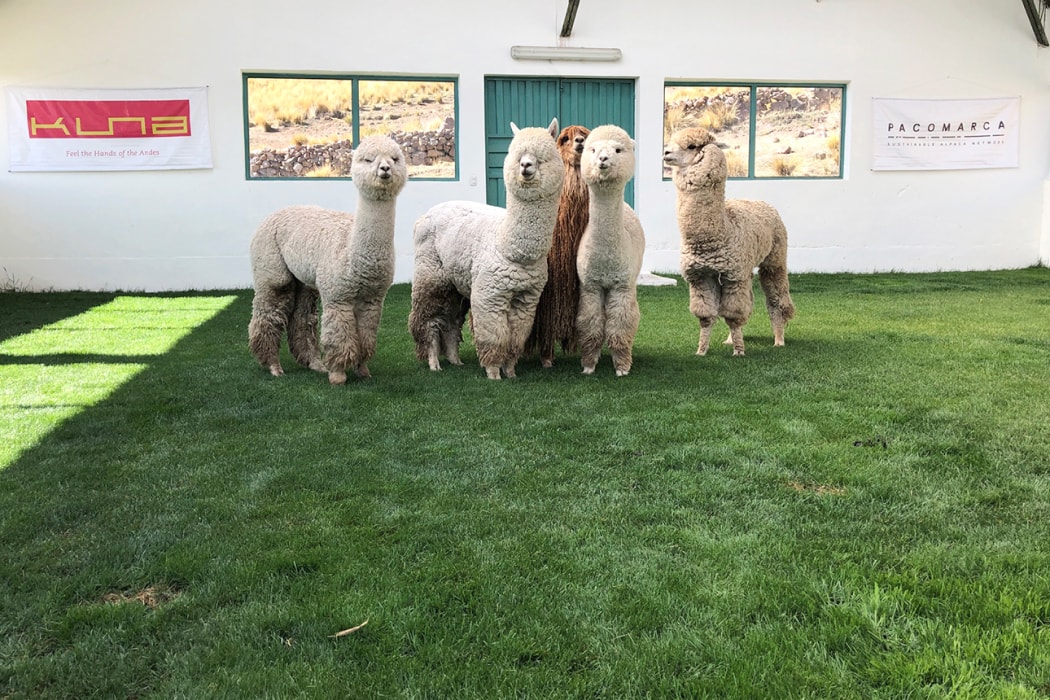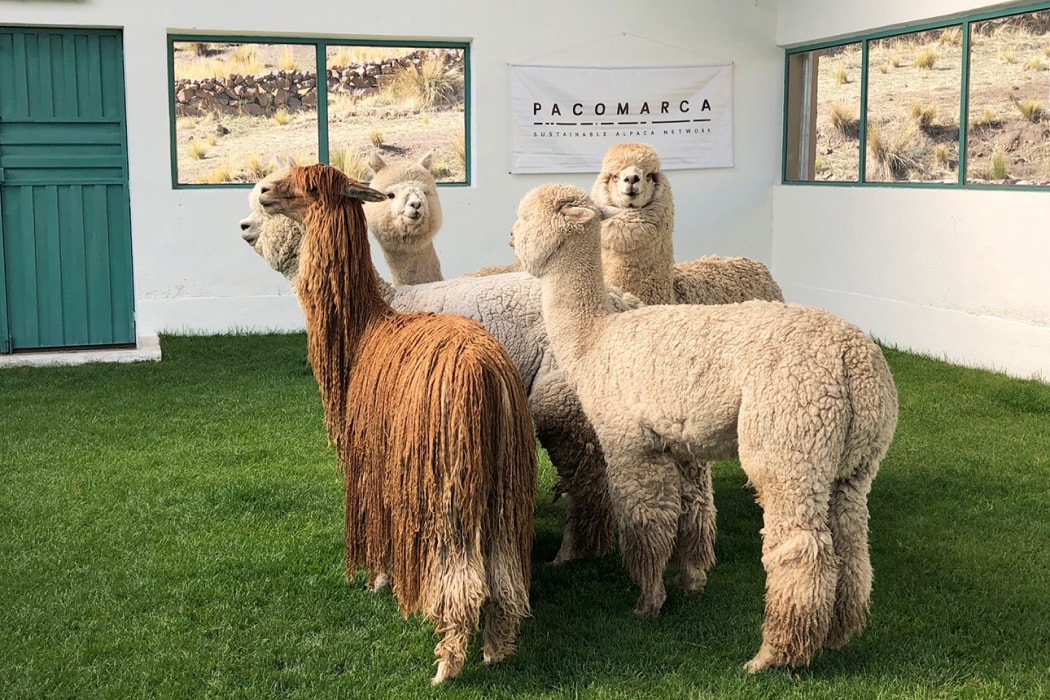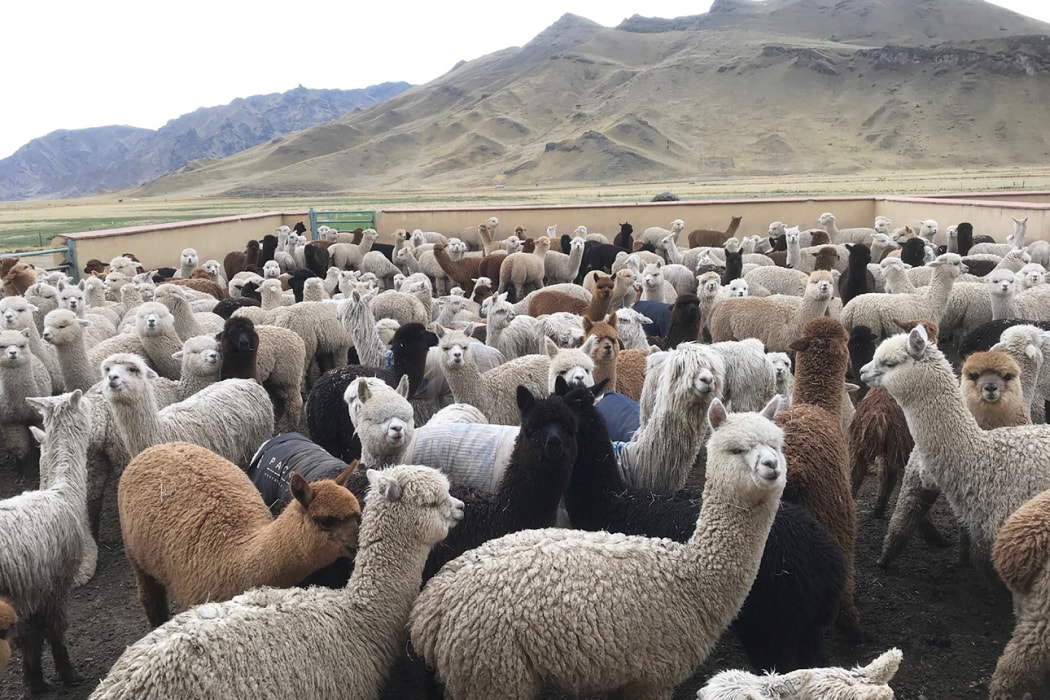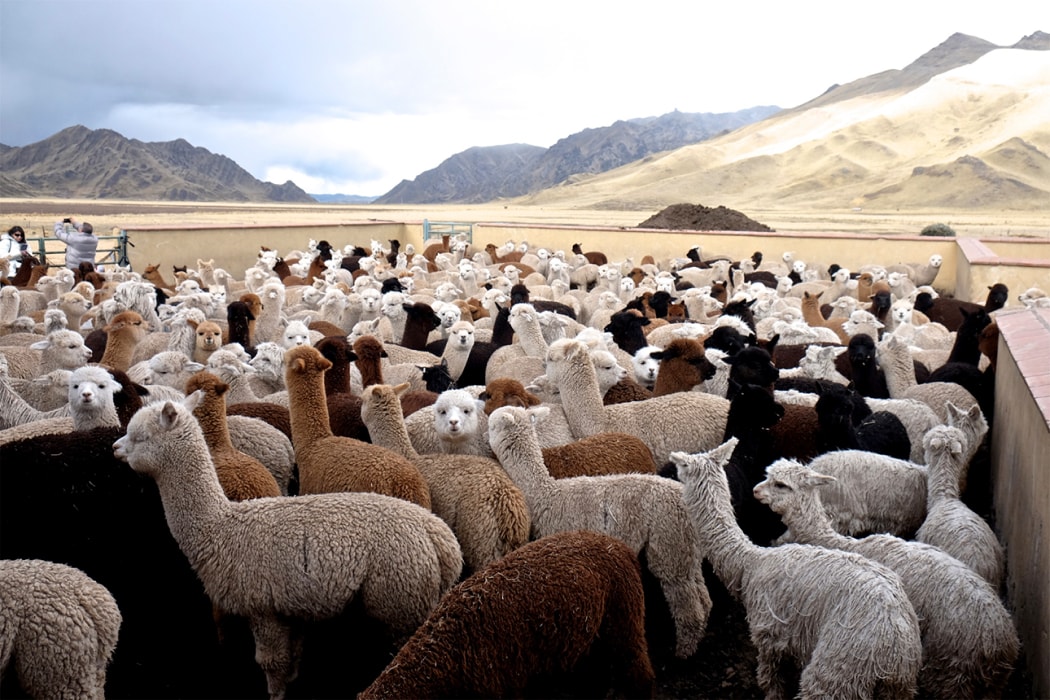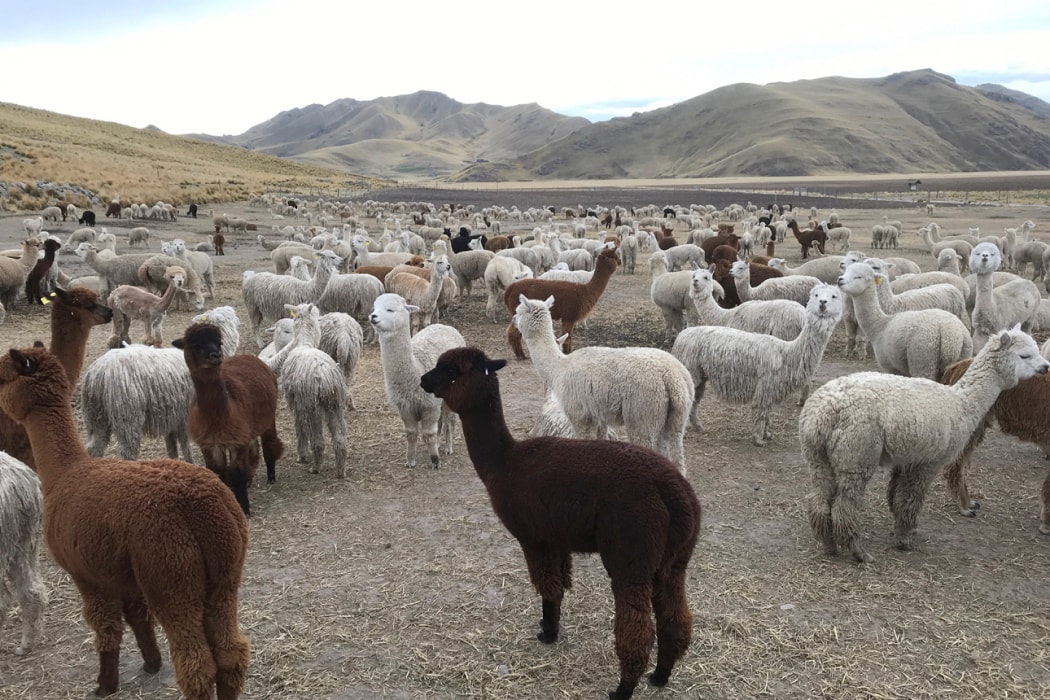The Alpaca, whose scientific name is Lama Pacos, is the most numerous of the four south american camelid species. With a population of approximately 4 million in Peru, representing 75% of the world's alpacas, they provide the main sustenance for thousands of families living in the higher parts of the andes.
Alpacas measure between 1,20 and 1,50 meters in height (4 to 5 ft) and weigh between 45 and 79 kilograms (99 to 174 lb). Their profile is smaller and less angular than that of the llama and they bear a characteristic fringe of hair over the forehead.
In the Peruvian “sierra”, at locations over 4000 meters (13120 ft) above sea level among impressive landscapes, where the difference in temperature between night and day may be as much as 30 Celsius Degrees (54 Fahrenheit Degrees), thousands of rural families raise herds of alpacas as has been the custom for thousands of years. Their main income is derived from the sale of the fiber which they shear from their alpacas each year.
There are two varieties of alpaca: the Huacayo and the Suri. The Huacayo is the more numerous type in Peru, and represents 93% of the alpaca population. Its fiber is relatively short, crimped, dense, and bulky; it covers almost the entire body, leaving exposed only the face and feet, which are covered with short fur. The Suri Alpaca has straight, silky hair which is long and exceptionally lustrous.
The Alpaca is shorn with scissors generally once a year during the shearing season which runs from November to April. The production per animal varies greatly, but a general average is 5 pounds (2,3 kg) per animal, although some specimens may yield a fleece weighing as much as 15 pounds (6,8 kg).
The fiber occurs in a variety of colors (up to 22) but is more uniform than that of the llama and ranges from black to white with intermediate shades of grays and browns. This is a characteristic which cannot be found in other natural 'noble' fibers used in textile manufacturing.
The fiber is manually sorted according to its fineness into grades such as royal alpaca (finer than 19 microns), baby alpaca (22,5 microns), super fine alpaca (25,5 microns), huarizo (29 microns), coarse (32 microns) and mixed pieces (short fibers, generally coarser than 32 microns).
The names given to these grades do not necessarily reflect the age of the animals or any phenotypic characteristic. The grade called baby, for example, refers to products (tops, yarns, fabrics, etc.) made from fibers whose average diameter is 22,5 microns. However, this grade does not necessarily come from baby animals; it may well come from an adult specimen with particularly fine hair.
Each grade is used to create different products such as fabrics, scarfs, pullovers, blankets, carpets and so on, and may also be blended with other fibers, usually of natural origin.
Alpaca fiber can be processed on both worsted and woolen systems, enabling fabrics ranging between heavy tweeds and fine gabardine to be produced. Alpaca fiber does not break, fray, stain or accumulate charges of static electricity, and is easy to wash.
Alpaca fiber can be processed on both worsted and woolen systems, enabling fabrics ranging between heavy tweeds and fine gabardine to be produced. Alpaca fiber does not break, fray, stain or accumulate charges of static electricity, and is easy to wash.
Raw alpaca fiber is relatively clean and provides a yield between 87% and 95% after processing, whereas yields from sheep wool are between 43% and 76%. Furthermore, processing alpaca is simpler and cheaper than processing other animal fibers owing to the absence of grease or lanolin in the fleece and, unlike cashmere, no de-hairing process is required.




